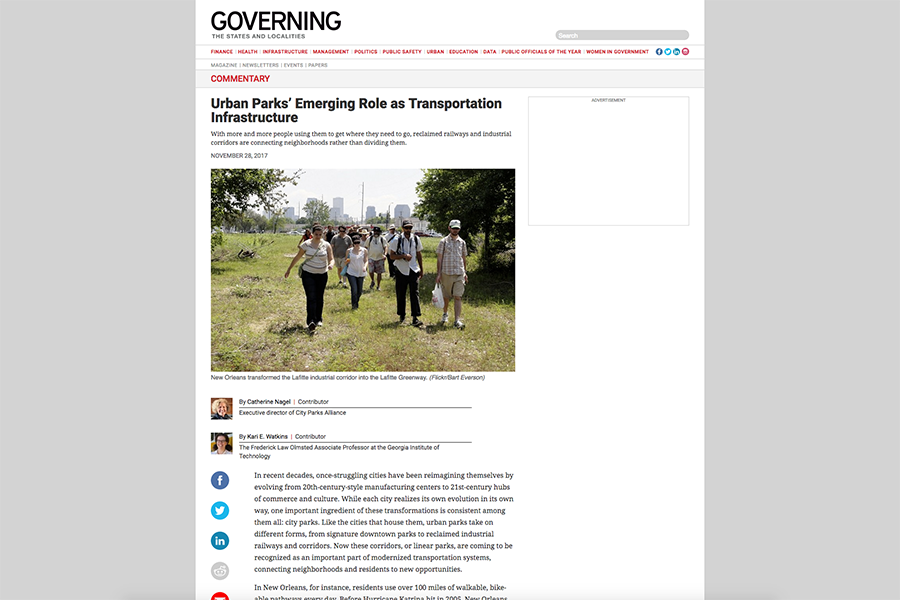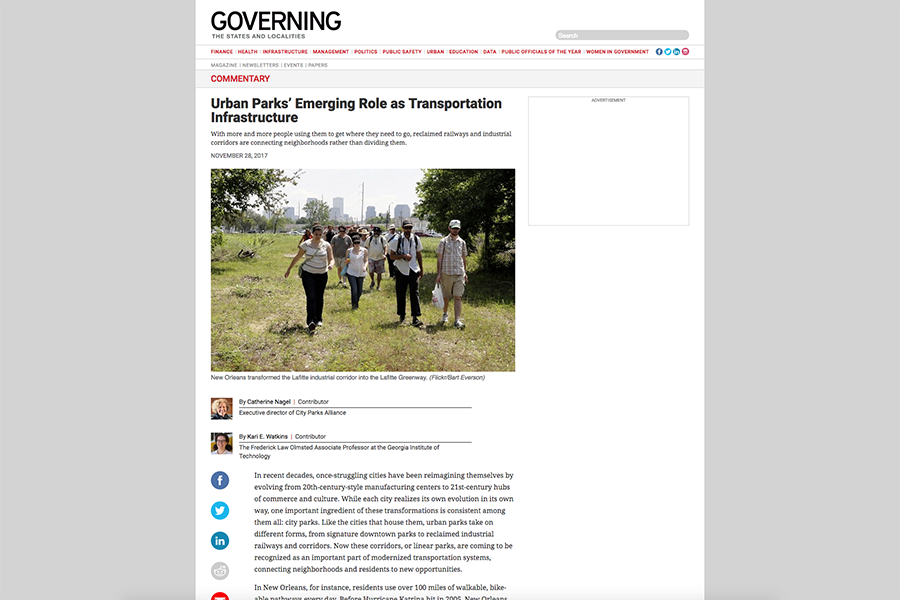
 |
 Watkins |
Parks — especially linear parks — are emerging as viable and popular transportation corridors in cities around the country and connecting once-divided neighborhoods, according to a commentary published in Governing magazine Nov. 28.
Written by Frederick Law Olmsted Associate Professor Kari Watkins and City Parks Alliance Executive Director Cathering Nagel, the op-ed highlights successful efforts in New Orleans and Chicago to transform old railway and industrial corridors into green space with some surprising results.
“In 2015, its first full year of use, 272,000 people walked or bicycled the [Lafitte Greenway in New Orleans],” the pair wrote. “That’s an impressive number, but it contained a surprise: A study by the Georgia Institute of Technology showed that 80 percent of weekday morning and afternoon cyclists use the Greenway not for recreation but for transportation to and from work, school and shopping.”
They suggest that considering parks as transportation infrastructure as well as green space could help cities create a more sustainable future, “supporting public health, recreation, stormwater management, neighborhood investment and job opportunities through connections to low-cost public transportation.”
|
WATCH: City Parks: America’s New Infrastructure – Traffic & Transportation |
Writing for Governing’s audience of state and local government leaders, they conclude that “the substantial and growing returns that parks provide are not always accounted for in balance sheets but are critically important to urban livelihoods and the future of our cities. As leaders at the federal, state, and local levels look ahead to allocating scare resources among infrastructure investments, parks must be a part of the solution.”
